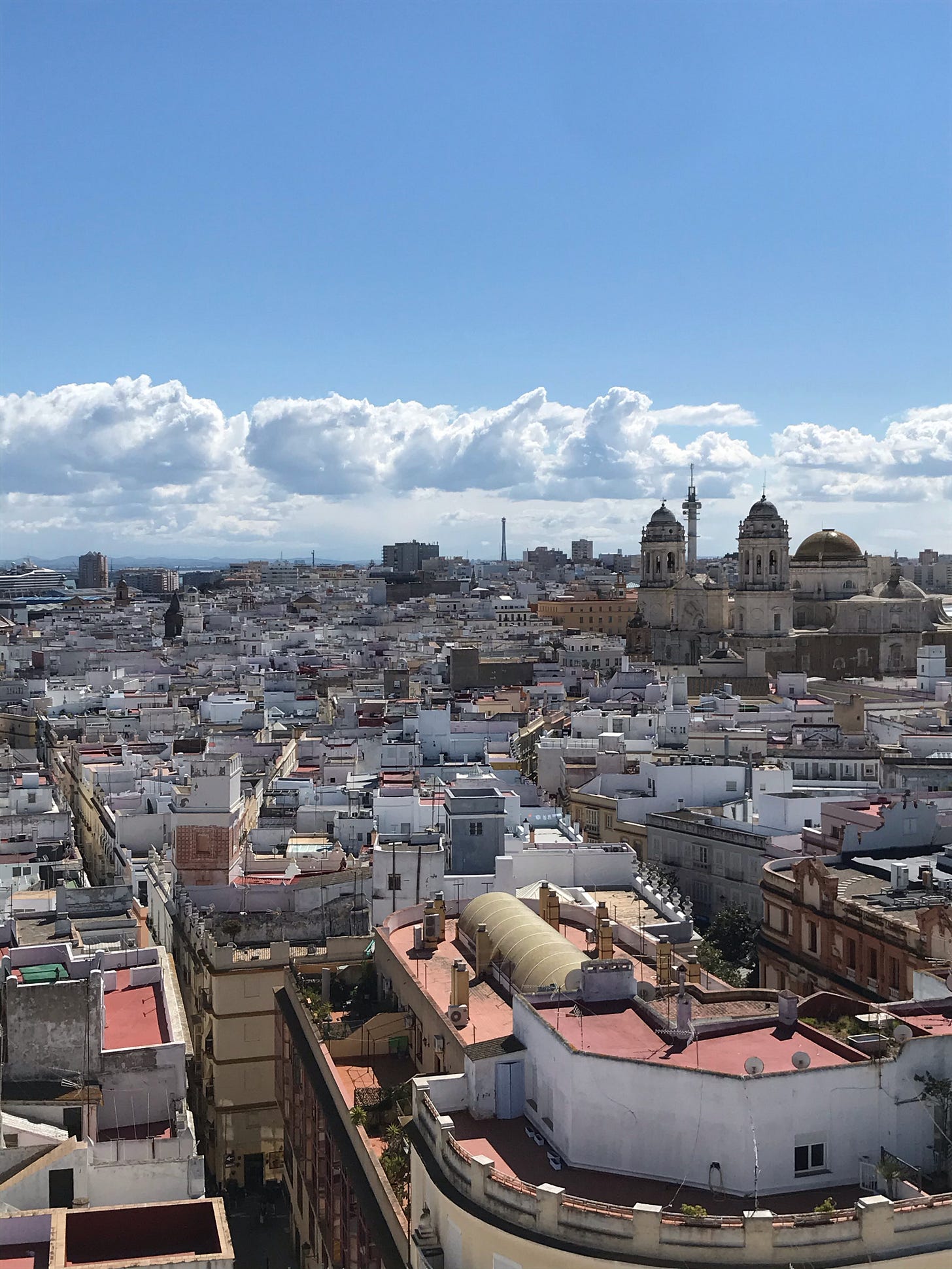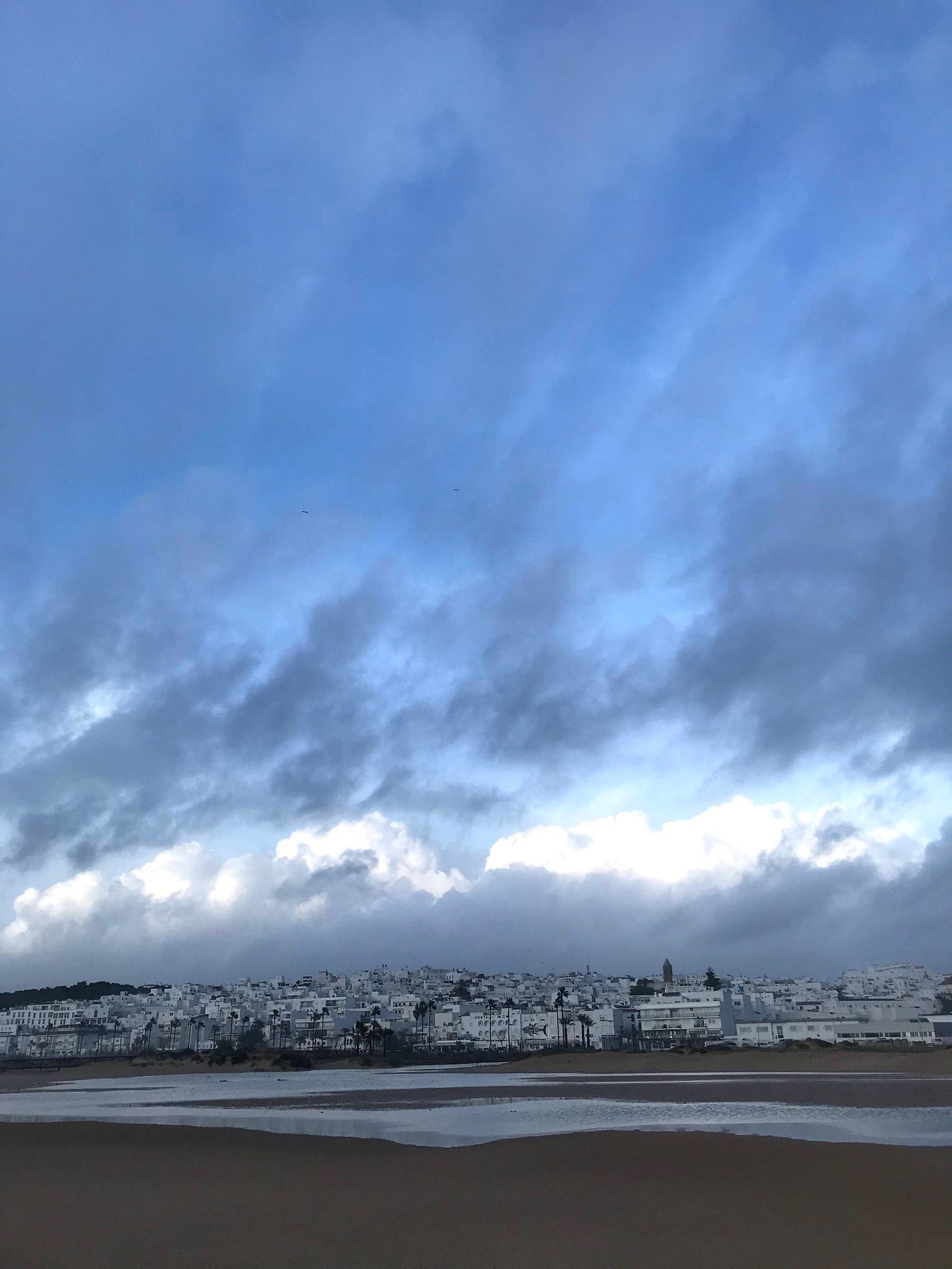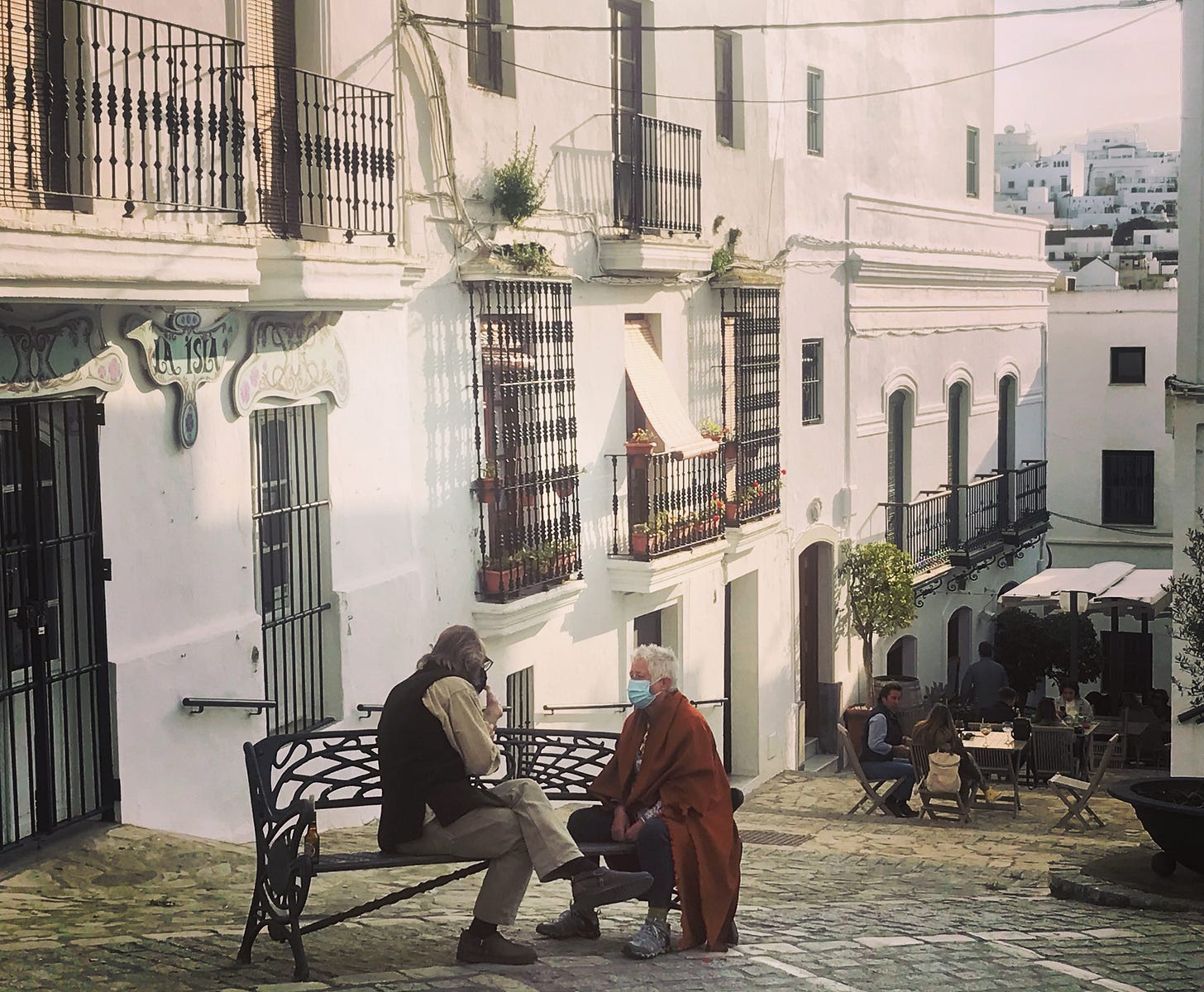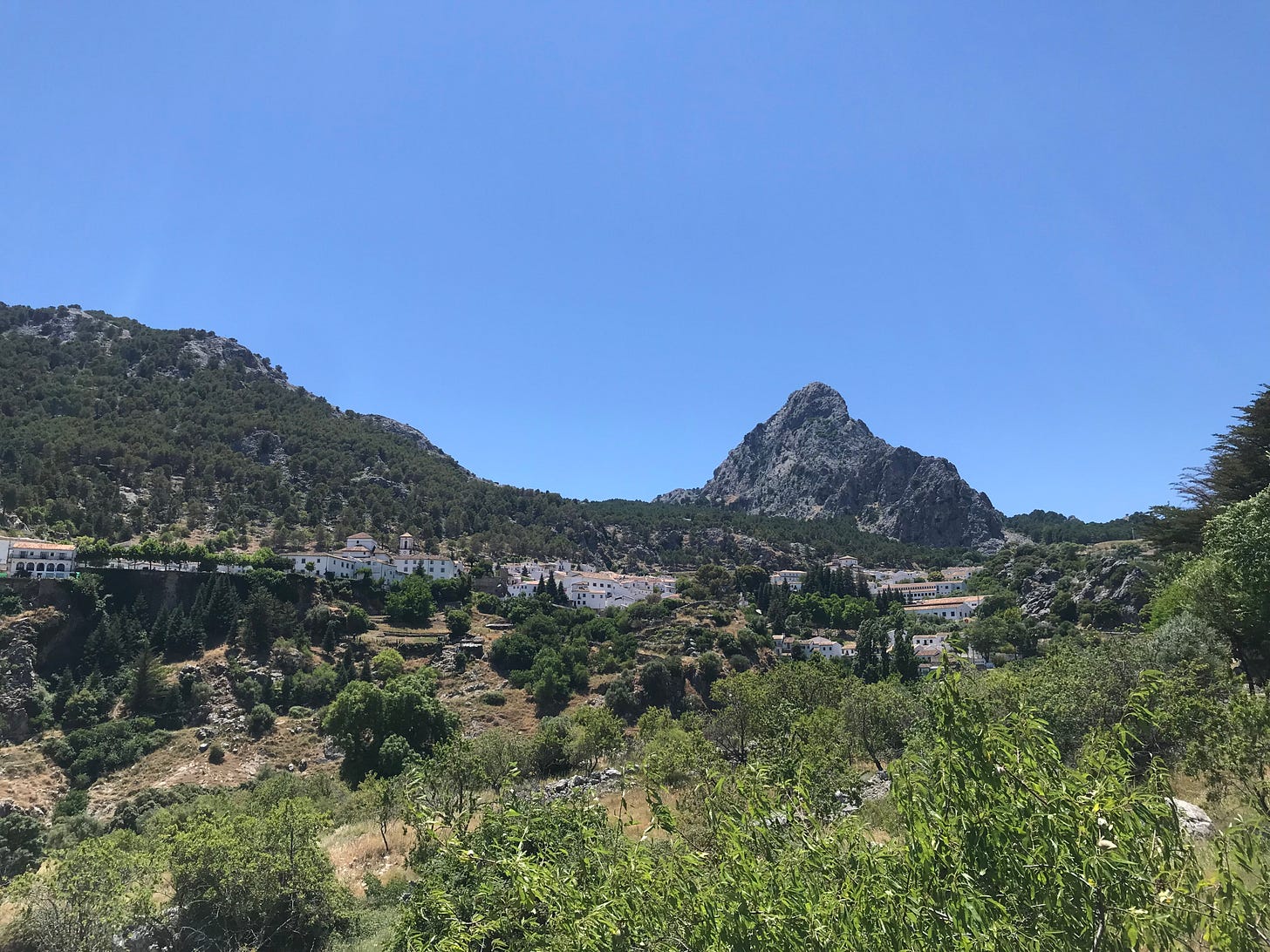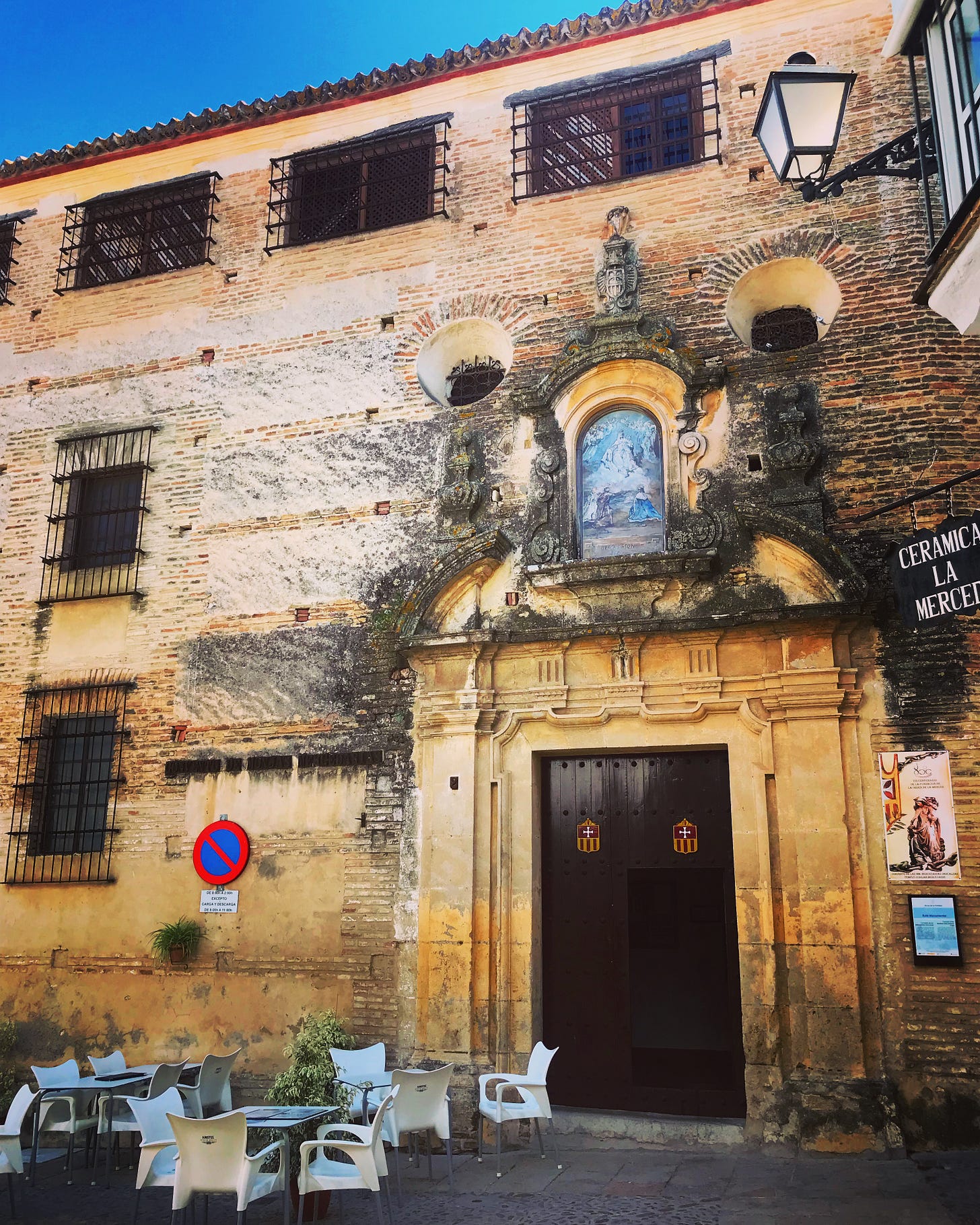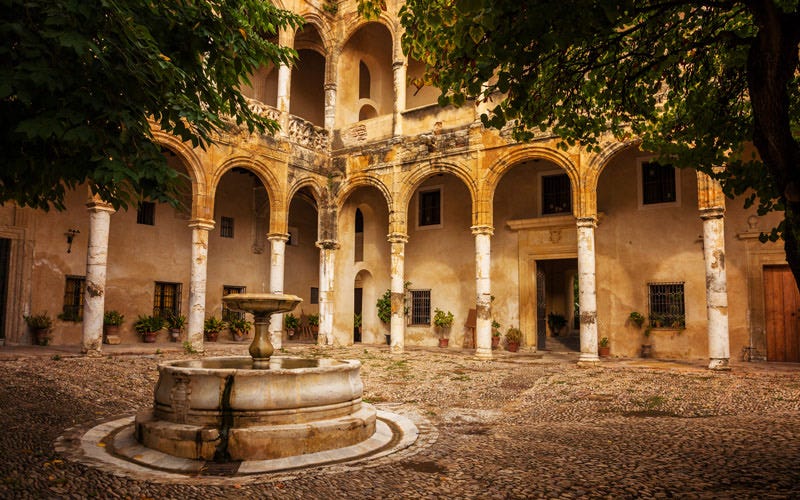15 Towns and Villages You Should Explore in Cádiz Province, Spain
A Destination Guide to the One of Andalusia’s Most Fascinating Regions
Cádiz is home to undeveloped beaches, Roman ruins, white hilltop villages, the only Sherry and Manzanilla wine regions on earth, and several enormous mountain ranges, yet most people don’t even include the province and its Costa de la Luz on their travel itineraries. Because Cádiz doesn’t really have a truly major city — no Seville, Granada, Córdoba or Málaga — it’s very often neglected by travelers, and when they do go, it’s usually just Cádiz city for a couple days. This rich region — whose history includes Phoenician settlements, Punic colonies and Roman cities all interlaced and superimposed one upon the other — deserves so much more time and attention than anyone can give it on a long weekend trip. This is the land beyond the Pillars of Hercules — where non plus ultra was the sailor’s warning: nothing further beyond.
Cádiz Province, with about 1.2 million people in total, is much less populated and much less known than its more famous neighbor, Málaga Province, with its famously overdeveloped Costa del Sol and its posh party scenes in Marbella and Fuengirola. One reason for Cádiz’s relative obscurity could be its lack of transportation infrastructure. Though easy to get around by car with virtually no traffic and well maintained roads, it’s biggest airport in Jerez de la Frontera is still pretty small and its one main high speed train line, which connects Madrid to Cádiz via Jerez doesn’t really go anywhere else in the province. Many of its best beaches and villages are quite isolated, so they take a bit of time to get to. The coastline of this area is popular with Spanish tourists and also with the Germans and the Dutch, but the Brits seem to prefer Málaga and the Americans don’t seem to have discovered this ancient corner of Spain at all quite yet, beyond the military staffed at Rota Naval Base and the air base at Morón de la Frontera.
Here are my recommendations for enjoying the rare pleasures of Cádiz Province, all 2,800 square miles (7.300km) of it, from the turquoise Atlantic with its ancient ports to mountain forests, sunflower fields and arid high altitude olive groves.
1. Cádiz
Cádiz town, the elegant yet scruffy cultural capital of Cadiz has been occupied by humans since forever and many, many cultures have once occupied this peninsula, from Phoenicians to Romans to Tartessians. Thought by many historians to be the longest continually inhabited place in Europe, this narrow spit of land is only about four blocks wide, until you reach the ancient city gates and the casco viejo, or old quarter, which is peppered with Roman ruins, defensive forts and grand centuries-old rubber trees that were brought here from the New World. A beach town in the truest sense, walking around Cádiz feels like walking around on a cruise ship in mid-ocean, with fresh ocean breezes and views of the sea and bay around every corner.
The urban beach here, La Caleta, is chocked full of the eccentric locals that Cádiz is known for. A friend says that many of Cádiz’s characters could only exist here in this miniature stage set of a city, a parallel reality to the rest of the continent, connected only by a couple of bridges and a narrow spit of beach with an adjacent parkway and rail line. I recommend La Viña, a barrio chocked full of bars and locals, where you can get the lightly fried fish the area is known for and settle in for an afternoon of people watching.
2. Conil de la Frontera
Conil de la Frontera is a tale of two cities. In the winter and early spring, it’s a paradise on earth, with empty beaches for miles, incredible skies and warm and welcoming locals. In the summer high tourist season, it’s Love Island times 50, with party people lining every street, nightly botellons on the beaches, and nightclubs way too big to make sense for a village this size.
But Conil is the rare combination of white village and beach town and it somehow maintains its local feel even when inundated by tourists, especially if you avoid the old town. I wrote a longer piece on Conil that dives much deeper into my love for this place.
3. Vejer de la Frontera
Vejer de la Frontera is a fantasy nestled on a steep hilltop that looks out over the Atlantic and verdant agricultural and equestrian valleys below. If you noticed I slipped into the “luxury language,” that’s because Vejer forces me to do it. It’s a fancy, yet totally authentic white village packed full of lively locals that just happens to be the kind of place a utopia writer would set a short story. Meander its narrow lanes and you’ll come across charming plazas, insanely old churches and city walls, and lovely bars and restaurants, all seemingly staffed by happy and friendly local people. Entering Vejer is like entering another world. Even the air seems sweeter up here on the hill and you get the feeling that whole lives are lived up here, unconcerned with the problems that take place down below. Plus Vejer is only a few miles from its own hippie beach town, El Palmar, a ragtag grouping of houses and beach bars that happens to have one of the best surf breaks in Andalusia.
4. Zahara de las Atunes
Professional football (soccer) players and Spanish television celebs live in Zahara de las Atunes, if that tells you anything. This tiny village on the Atlantic near port town Barbate — where dictator Francisco Franco liked to spend his holidays — is a tight tangle of narrow streets, packed with people and excellent seafood restaurants and bars. One of the town’s main draws is the undeveloped land to the north, where there are miles and miles of hiking trails and undeveloped beaches, thanks to it being formerly managed by the military. Within an hour’s walk of the town, you’ll find nude beaches, excellent kite surfing and some great chiringuitos (beach bars).
5. Bolonia
Playa de Bolonia and Baelo Claudia combine two incredible things — a world class beach and a very well preserved Roman village from 45 AD, complete with amphitheater, statues and tiled mosaic baths. Did I mention it’s on the beach? Need I say more?
6. Tarifa
Tarifa is a scruffy surf town — but more specifically, a kite-surf town, although there are also regular surfers and windsurfers here. It’s also a pretty epically famous hippie/hipster spot, drawing in Europeans from every corner of the continent, who come for the summer to party, chill and play in the ocean. The literal spot where the Mediterranean meets the Atlantic, there are two types of seas here — the warmer, calmer Med on the left and the chillier, windier Atlantic on the right of the town’s main fort, which jets out into the water on a man made rocky spit. Africa looks close from Tarifa because it is — only 20 miles (32 km) and there are 30-minutes fast ferries from Tarifa to Morroco that lends the town the rough-around-the-edges vibe that ports tend to provide. The old town center has a Moroccan feel, with new age shops, yoga studios and surf schools around every corner.
7. Medina Sidonia
Medina Sidonia is a living museum of a pueblo, a place that holds a lot of history and a very important heritage in this southern part of Cádiz Province, mainly because this is where the Lords of Sidonia ruled from, a family that was basically gifted this enormous territory after defending the area around Tarifa from invading Moors. The most well known Lord of Sidonia, Alonso Pérez de Guzmán “el bueno” was in charge of this region for hundreds of years and his name is on everything from streets to hostels to plazas. The main Gothic-Renaissance church here — the Church of Santa María la Mayor la Coronada — is worth exploring, as well as the Roman ruins behind the church.
8. Olvera
When you first spot Olvera in the distance, gleaming on a hill with a giant cathedral and Moorish fort towering over that, it looks like a place conjured up for the Wizard of Oz. This could be Oz, had that story taken place in Andalusia. The village itself is quite workaday and not touristy at all, with village essentials like a post office, grocery stores, lively bars and restaurants, and several outlets to buy local olive oil very cheaply. Beyond the village, there’s the gateway to the Via Verde la la Sierra, a 240 mile (38 km) former railway, now walking/cycling/horse riding path that weaves and bobs through tunnels and villages on its way to Puerto Serrano. The pathway is also part of the newly established branch of the Camino de Santiago — the Camino de Serrano — which goes from Algeciras to Seville before linking up with another pathway north.
9. Grazalema
Grazalema is a sweet and charming mountain white village that’s set in a valley, so it gets way more rain than most of the areas around it, so it’s greener and little cooler than the rest of the Sierra de Cádiz towns. Beyond the charms of the village, with churches, shops, and many bars and restaurants, the main reason people come to the Grazalema is to hike. It’s literally surrounded by world class hiking, including the reservation only Pinsapar nature reserve, a place where a very rare species of pine tree is found growing natively.
10. Sanlucar de Barrameda
Sanlucar de Barrameda is a small town or a large village of about 80,000 people that feels and looks like one of the colonial cities that the Spanish settled in South America. Famous for its local version of dry Sherry — Manzanilla — which means “chamomile” in English, the town is set on one side of the bank of the River Guadalquivir, the river that runs through Seville, so many important expeditions have been launched from Sanlucar, including Christopher Columbus’s third voyage to the Americas. Photographed right, Sanlucar could be Cuba or Ecuador, with crowded plazas, narrow streets and ancient churches overlooked by a big stone fort. The town is famous for its seafood, notably the Sanlucar prawns and crispy prawn cakes, which are served on a stick, and there are hundreds of restaurants from which to choose. In the summer, there are horse races on the beach, with the river and ocean in the background. The national park Doñana, which is across the river from town, is known for hundreds of square miles of wetlands and salt flats and often hosts flamingos on holiday from Africa as well as many other rare bird species. Even though it sounds like the town must be named after a saint “Lucas,” it’s actually derived from the Arab shaluqa (شلوقة), the Arabic name for the Levant wind, or the strong eastern wind that often plagues the coast of Cádiz from Tarifa to Sanlucar.
11. Setenil de las Bodegas
Setenil de las Bodegas is a small village that they could shoot a live action version of the Flintstones in. With narrow streets built into cliffs and caves, there are whole sections of town that are covered from the sun, with shops, bars and restaurants housed in literal caves in the rock face. Most people come to the village, walk around for a bit, and then settle into one of the bars or restaurants in the cliff and have a couple beers and some tapas, listening to the gentle trickle of the stream below. It makes for a very chill day and it’s only 20 minutes from Ronda in nearby Málaga Province.
12. Arcos de la Frontera
Arcos de la Frontera is a town with a heavy, historical feel — sort of a cruise ship planted on a long, narrow mesa, most streets lacking light and views out over the valleys surrounding town. Moorish in its inward looking design, it has way too many important buildings for a pueblo its size, and way too many grand palaces, the former homes of the region’s richest and most powerful families. It feels like the ages-old oppression of these rich families has bled down into the everyday culture of the town, placing a somber weight on the consciousness of the place. Nonetheless it’s a fascinating place and one of the largest white villages in the province, with over 30,000 residents. Don’t go in mid-day or you won’t see anyone. (This advice goes for most places in southern Spain.)
13. Bornos
Bornos is a very small town and mostly unknown by foreigners, but it’s a jewel box set on a hillside overlooking a reservoir of the same name and well worth an afternoon. The site of the Roman city and necropolis of Carissa Aurelia, in the center of modern day Bornos is a Moorish fort that was transformed into a palace by a very rich and powerful Enríquez de Ribera family in the 16th century after the Reconquest. Called the Castillo-Palacio de los Ribera, it’s now a museum with Renaissance gardens and an orchard. This tiny village also contains the 1597 Colegio del Sangre, the Monastery of Santa María del Rosario, the 1571 Corpus Christi Convent and the only 16th century loggia containing Pompeian images in Andalusia. Designed by Benvenuto Tortello, this classical composition of arches topped with a classical Roman frieze with obvious Greek inspiration, is decorated with triglyphs and metopes. In other words, this is a tiny village with many, many world class historical monuments and I’m not sure why it’s not more well known.
14. Castellar de la Frontera
A place being very Game of Thrones is thrown around a lot since the landmark drama had its finale on HBO, but this village, perched precariously on a mesa and surrounded by ancient walls and guarded by gates, is pure GOT. But once you climb the hill and infiltrate the castle walls, instead of finding warring dragons and scheming queens inside, you’ll find a quaint village with narrow streets lined with very old buildings, softened by flowers, bougainvillea, the soothing sound of fountains, and the clink and clank of quiet sidewalk cafes. I’d love to spend a weekend here.
15. Zahara de la Sierra
The second Zahara on this list, this small mountain village manages to be dramatic and cozy at the same time. Perched above its namesake reservoir, Zahara is well known by foreigners and has a sizable expat community, great hiking, nearby swimming, and its tiny village center is charming — filled with excellent independent bars and restaurants serving mainly Spanish food done right. You can’t go wrong with Zahara unless you’re put off by summer heat and a lot of British expats.
If you go to Spain any time soon, I really recommend Cádiz Province. If you’ve been, please let me know what I’ve missed. I’ve only been here six months, so I haven’t had time to see everything.





